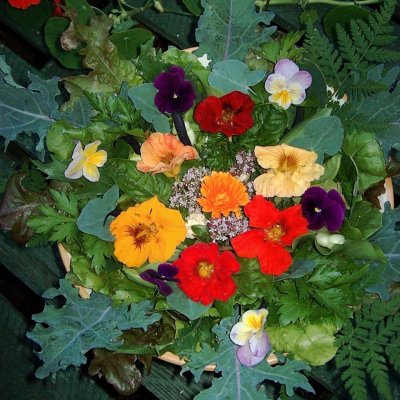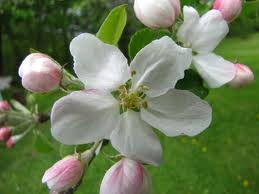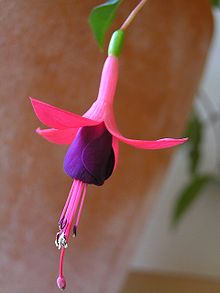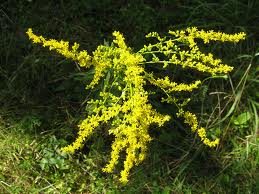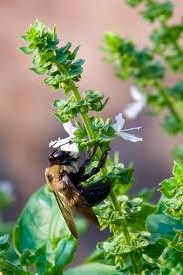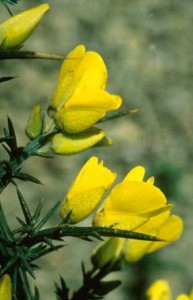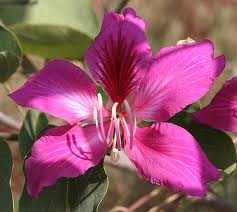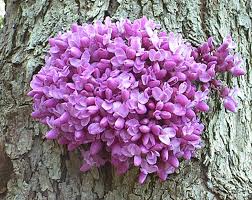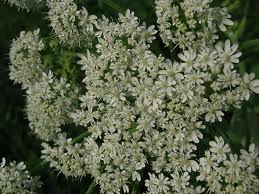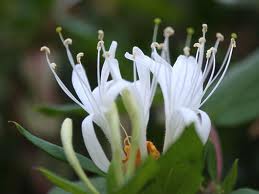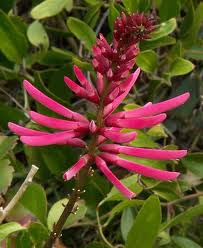Apple, Fuchsia, Sweet Goldenrod, Basil, Gorse, Bauhinia, Eastern Redbud, Angelica, Honeysuckle, Eastern Coral Bean
Every seed in every apple is different than the parent apple trees. Every apple you eat of the same kind is a clone because there was only one original apple tree with that apple. That’s how there came to be some 7,000 different kinds of apples over the years. With mechanization that number has about half. Around the home I grew up in were many wild apples of no distinct variety, just something that sprouted from a tossed away core. Each one unique and the product of littering. What most folks don’t know is that you can eat apple blossoms. Soft scented, floral, only consume a few at a time because they contain a precursor to cyanide which gets release during digestion. A little is tasty. Too many is a tummy ache. A lot is a trip to the hospital. See separate article on site.
Discovered by Europeans in the Caribbean in 1703 — the natives already knew it was there — Fuchsia has been an ornamental for centuries. It’s a native of the warmer Americas and parts of New Zealand. There are 110 recognized species now, even some that can grow in cooler climates. Most of them are shrubs though one is known to reach tree height. Fuchsia blossoms are edible as are the peppery grape-tasting berries which grow on long stems. The flower is a favorite garnish because of its many strong colors which can range from white to dark red, purple-blue, and orange. Their flavor is slightly acidic. See separate article on site.
As you might assume the Boston Tea Party of 1773 reduce the colonists store of tea, and think how far that tea had come, from the other side of the world by sailing ship. It wasn’t as if a new shipload was arriving anytime soon as a replacement. The colonists, already an irritated independent lot, came up with their own “Liberty Tea” and even shipped it to China. Called into action was the Sweet Goldenrod, and not just any Goldenrod but the Solidago odora. While it is reported you can make a tea out of any Goldenrod the top of the botanical heal is the S. odora because it tastes like anise. The flowers and the leaves can be used to make tea. See a separate article on site.
I will admit to being lazy and throwing basil blossoms into my pesto, and soups and stews. That workhorse of the kitchen and Italian cuisine also has edible flowers. It was a practical matter besides culinary. At some point your basil plants begins go to blossom. It’s making enough energy to reproduce and send forth seeds. If you let it, the bush senses its purpose is over — no doubt a chemical signal — and retires. But if you keep snipping off the blossoms it keeps on living to reproduce another day. By using the basil blossoms you get more basil leaves. The blossoms are usually white but can be pink to lavender. The taste like basil lite. They’re a nice salad sprinkle.
There is a saying: “When Gorse is out of bloom kissing is out of season.” As Gorse is never out of bloom, that’s the good news. The bad news is that it is cover with thorns… Perhaps the wedding analogy is appropriate. A spray of Gorse was traditionally put in the bridal bouquet as a reminder. Weather that is of kisses or thorns I am not sure. One of the The thorns might also explain why its seeds are mostly distributed by ants. Gorse flowers are a trail side nibble. They can be added to salads, made into tea, or used to flavor wine. Oddly, the blossoms smell slightly of coconut but taste like almonds. The bright flowers have also been used for dye, Easter eggs to clothes. See separate article on site.
Bauhinias since first discovered have been a pain to sort out, and now there are some 600 species in a variety of colors. The blossom of the Bauhinia variegata and Bauhinia purpurea are eaten raw, pickled or cooked as a vegetable. Some Bauhinia blossoms are used for their nectar. Check out your local species with an expert as they are quite varied in use. My friend Sunny Savage, resident of Hawaii and now sailing about the world, uses Bauhinia blossom raw in salads. Often called the Camel Foot Tree because of the shape of the leaf, Bauhinias are also known as the Orchid Tree and the Hong Kong Orchid Tree. To see a separate article on site.
In the spring time in North America if you see a tree with no leaves and small pink blossoms it is almost certainly the native Eastern Redbud. I say almost certainly because here in Florida there is an imported ornamental that does the same thing at the same time with pink blossoms, except they are huge whereas the Eastern Redbud’s blossoms are small. Native Americans ate redbud flowers raw or cooked as well as the young pods and seeds raw or cooked. The flowers can be pickled. They have a slightly sour taste and are high in Vitamin C . They’re a pleasant addition to salads and can also be used as a condiment. The unopened buds can be pickled or used as a caper substitute. To see a separate article on site.
It’s difficult to imagine a kitchen or herbal medicine cabinet without Angelica around someplace. Angelica has long been valued for its seeds, stems, leaves and shoots. The first two for flavoring — such as in Chartreuse — and second pair as cooked greens, particularly in the Izu Islands of Japan where there are a favored addition to springtime tempura. They have a celery-like flavor. North American Indians, however, smoked the leaves for medicinal purposes. Celery-ish may its green parts be the blossoms, like the Sweet Goldenrod above, have a light anise flavor.
The greater honeysuckle family is an odd one. It straddles the edible/non-edible line, with some members long used as food and other members at least mildly toxic. For example, elderberries are in the Honeysuckle family, then tend to be edible in North America and not in the Old World. A famous or should I say infamous invasive member of that family is the Honeysuckle, Lonicera japonica, or Japanese Honeysuckle. It’s definitely the one we have here in the south spreading everywhere. Kids have known for generations that you can suck the sweet nectar out of the blossoms. Most of them don’t know, however, that the blossom is edible. It has a sweet, honey flavor. You can flavor wine with them as well. Tea is good, too. See separate article on site.
Like the Eastern Redbud the Eastern Coral Bean is a seasonal treat. Unmistakable in the springtime it sends up a flower spike populated with red, tubular flowers. The plant has hummingbirds in mind. They ripen for a few weeks then turn into toxic berries, which we do not eat. While the blossoms can be eaten raw they are usually cooked first by boiling. When you do the loose their color and turn light green. Slightly beanish, their traditional use is to mix in with scrambled eggs. Other species such as the Western Coral Bean are in similar ways, and also usually cooked. See my full article on site and video. See separate article on site.

